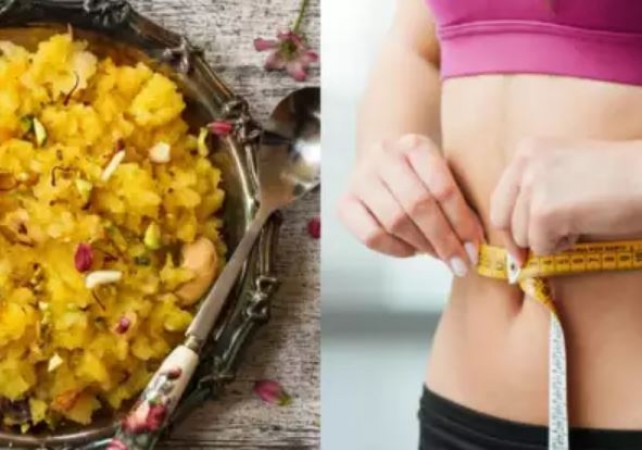
The Chaitra Navratri fast began on April 9, 2024, and concludes on April 17 with Kanjak Puja. During this Hindu festival, many people observe a fast for nine days, while some choose to fast only on the first and last days. Those fasting during Navratri consume 'phalahari' food, including items made from ingredients like barnyard millet flour, buckwheat flour, amaranth flour, water chestnut flour, and tapioca. Additionally, vegetables like potatoes, sweet potatoes, bottle gourd, taro, pumpkin, spinach, cucumber, carrots, and all fruits are also included in the diet.
Phalahari Diet During Navratri:
The phalahari diet, commonly followed during Navratri fasting, consists of foods made from non-grain ingredients such as barnyard millet flour, buckwheat flour, amaranth flour, water chestnut flour, and tapioca. Additionally, a variety of vegetables including potatoes, sweet potatoes, bottle gourd, taro, pumpkin, spinach, cucumber, carrots, and fruits are also permitted during this fasting period.
Fasting Guidelines:
Traditional fasting guidelines during Navratri prohibit the consumption of grains like wheat, rice, semolina, maize flour, lentils, and beans. It is recommended to follow a fruit-based diet during fasting days, as it can facilitate healthy weight loss when done correctly and in moderation.
Health Benefits of Fasting:
Fasting during Navratri not only holds spiritual significance but also offers various health benefits. Research indicates that fasting can aid in fat burning and weight loss. Moreover, it may help improve conditions such as high cholesterol, heart disease, and high blood pressure. The fasting period triggers a detox process in the body, promoting digestive system cleansing and overall well-being.
Food Alternatives During Fasting:
Instead of traditional grains, individuals observing Navratri fasts can opt for alternatives like buckwheat flour, water chestnut flour, amaranth flour, and barnyard millet flour. Dishes like khichdi or roti, prepared from these alternatives, are preferable over calorie-dense options like puris and pakoras.
Cooking Methods for Healthier Options:
When preparing food during Navratri fasting, it's advisable to boil or steam vegetables rather than frying them to reduce calorie intake. Boiled potatoes, for example, are a healthier alternative to fried potatoes. Fruits should be consumed in their natural form to maximize nutritional benefits and minimize added sugars.
Importance of Fruit Consumption:
Fruits are an essential component of the Navratri fasting diet, providing essential vitamins, minerals, and fiber. They not only contribute to overall health but also help maintain energy levels throughout the day.
Moderate Consumption of Root Vegetables:
While root vegetables like potatoes, sweet potatoes, taro, pumpkin, and yams are permitted during Navratri fasting, it's essential to consume them in moderation due to their higher calorie content. These vegetables are rich in vitamins, minerals, and fiber but can contribute to calorie surplus if consumed excessively.
Inclusion of Dairy Products:
Dairy products such as milk, yogurt, buttermilk, and paneer can provide essential nutrients like protein and calcium during Navratri fasting. Including these dairy products in the diet helps maintain muscle mass and bone health.
Hydration and Beverage Choices:
Proper hydration is crucial during fasting periods. While tea and coffee are commonly consumed beverages, it's advisable to limit their intake as they can lead to dehydration, particularly in warmer weather. Alternatives like coconut water, lemon water, buttermilk, milkshakes, or plain water are preferable choices.
Reducing Sugar Consumption:
Processed sugar should be avoided in sweets like kheer and halwa during Navratri fasting. Healthier alternatives such as dates, honey, cinnamon, or fresh fruits can be used to add sweetness to dishes while avoiding the negative effects of refined sugar.
In summary, observing a fast during Chaitra Navratri involves adhering to specific dietary guidelines, including the consumption of phalahari foods, avoiding grains, opting for healthier cooking methods, moderating root vegetable intake, incorporating dairy products, staying hydrated, and reducing sugar consumption. Following these guidelines not only fulfills religious traditions but also promotes overall health and well-being.
Beware of These Common Foods That Can Trigger Allergies
Discover How Chia Seeds Can Give You Radiant Skin
National Safe Motherhood Day: Maternal Health for a Brighter Tomorrow, Top 10 Quotes